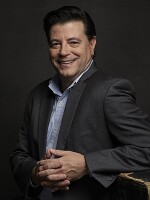Fashionable art supply stores in the 19th century, like Sennelier in Paris and L. Cornelissen in London, were a feast for the eyes, replete with macabre taxidermy, exotic seashells and other curios from around the world.
In a commercial landscape that is, today, dominated by cookie-cutter big-box stores, the Lyme Academy of Fine Arts is taking a different route – transforming its art supply store to look like one of those eccentric relics of the past.
Stepping inside “de Gerenday’s Fine Art Materials and Curiosities,” you are greeted by the music of Django Reinhardt playing in the background and surrounded by thick, well-worn, antique wooden tables and cabinets. The furniture is stocked with art supplies as you might well expect.
What’s unexpected are the curios peppered among the paintbrushes and sketchpads – things like masks, antiques, taxidermic animal heads and jewelry.
Get an inside view of this unique store. Video by Dave Wurtzel
“These are the items artists want to use in their still-life paintings and drawings,” said Mora Rowe, executive director of the Lyme Academy. “One of our goals would be to create a cabinet of curiosities for our artists, so that when they are drawing they could come and borrow a shell, or take a piece of taxidermy and they could draw it. It’s a way to inspire creativity.”
Rowe designed the store. She said she got inspiration from old photographs of the famous 19th-century art supply and curio shops, and from her own travels in Europe. But she also got some good ideas by reflecting on a quintessentially American kind of store.
“Go into an old hardware store,” Rowe said. “It hasn’t changed for generations, it has this feel.”
“You are immediately engaged,” she said. “Even if you don’t want a tool, you’re like, ‘It’s so beautiful, what am I going to get?’ And you seek something out.”
To that end, Rowe said keeping those curios affordable was important.
“We really want this to be accessible to everyone. So we have things that are $12 and $5 so that everyone has access to something interesting and objects of beauty. There’s a story behind all of them,” Rowe said.
The ultimate goal of de Gerenday’s, Rowe said, is to bring people together and inspire them.
“Of course to inspire art, but also inspire people to travel, to learn about history and just to have some fun,” she said. “There’s something here that somebody connects to in some way, and it sparks conversation. And in communities today, I think that’s really important, right? Connection.”
De Gerenday’s Fine Art Materials and Curiosities is on the campus of the Lyme Academy of Fine Arts in Old Lyme and is open Monday through Friday, 9 a.m. to 4 p.m., and Saturday, 10 a.m. to 4 p.m.





